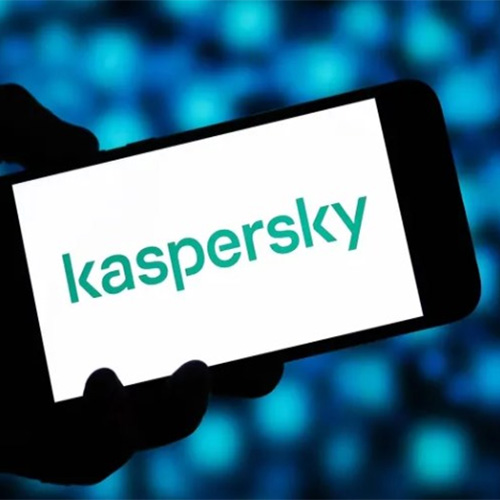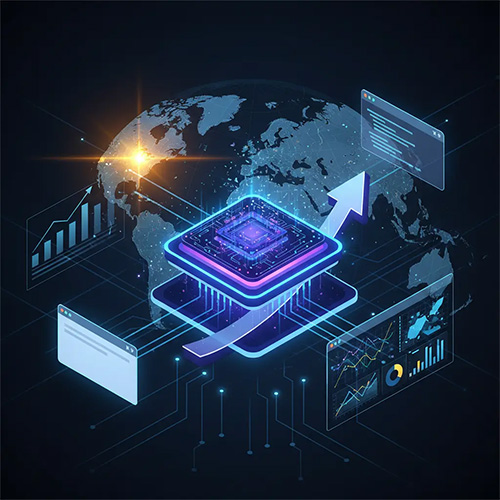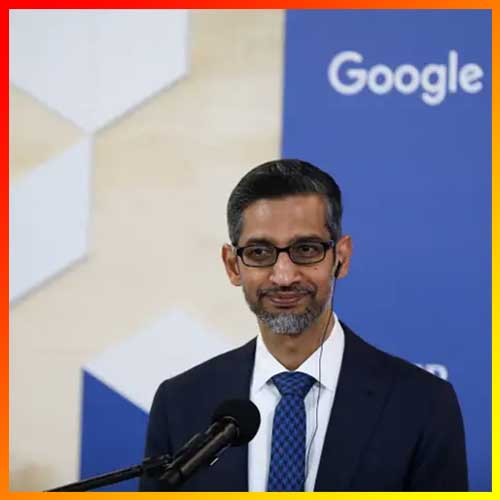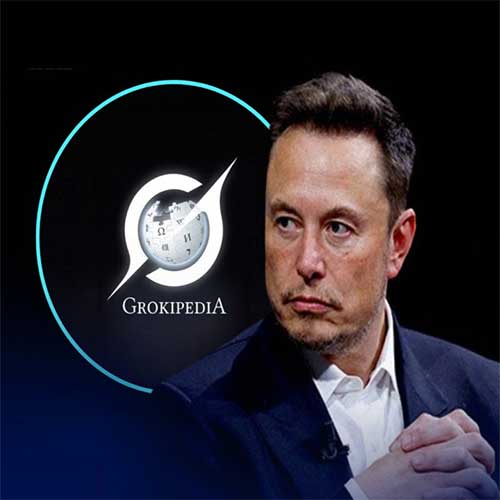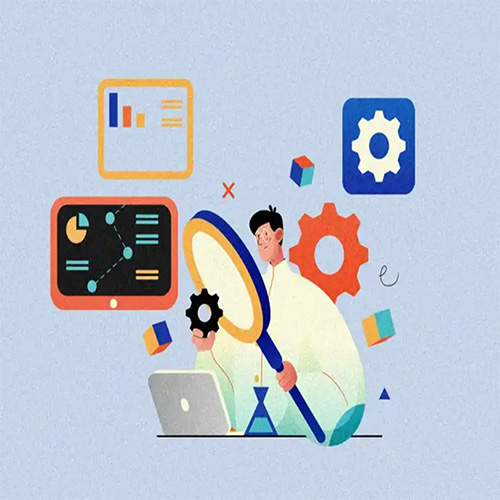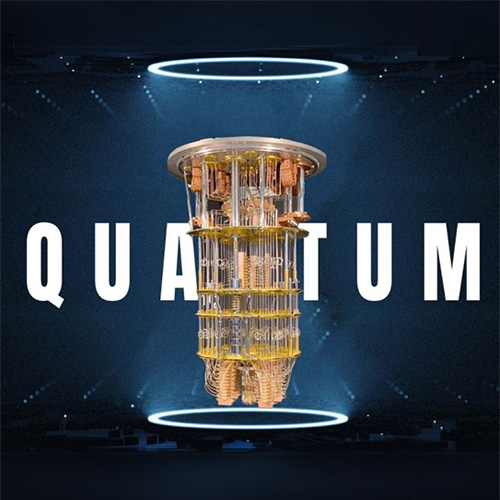Partners are the frontrunners who help customers embrace Digital Transformation - SNA 2022
2022-11-28
VARINDIA witnessed a tremendous growth and momentum among the partners who attended the 21st edition of VARINDIA Star Nite (SNA) Awards, held at Hotel Roseate House, Aerocity, New Delhi on 11th November 2022. With the changing buying behaviour in both online and offline customers, Indian VARs find massive opportunities and they continue to grow their business.
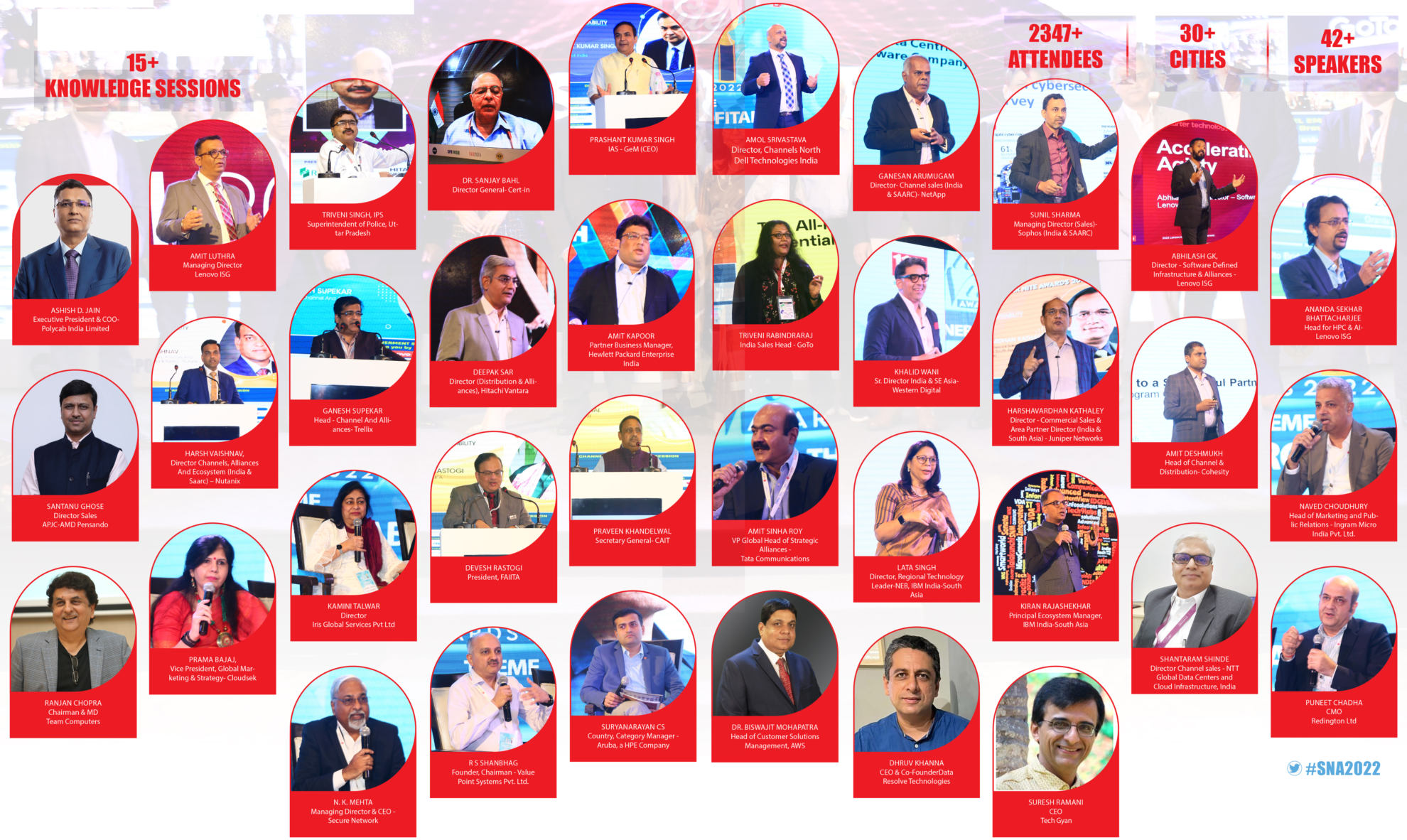
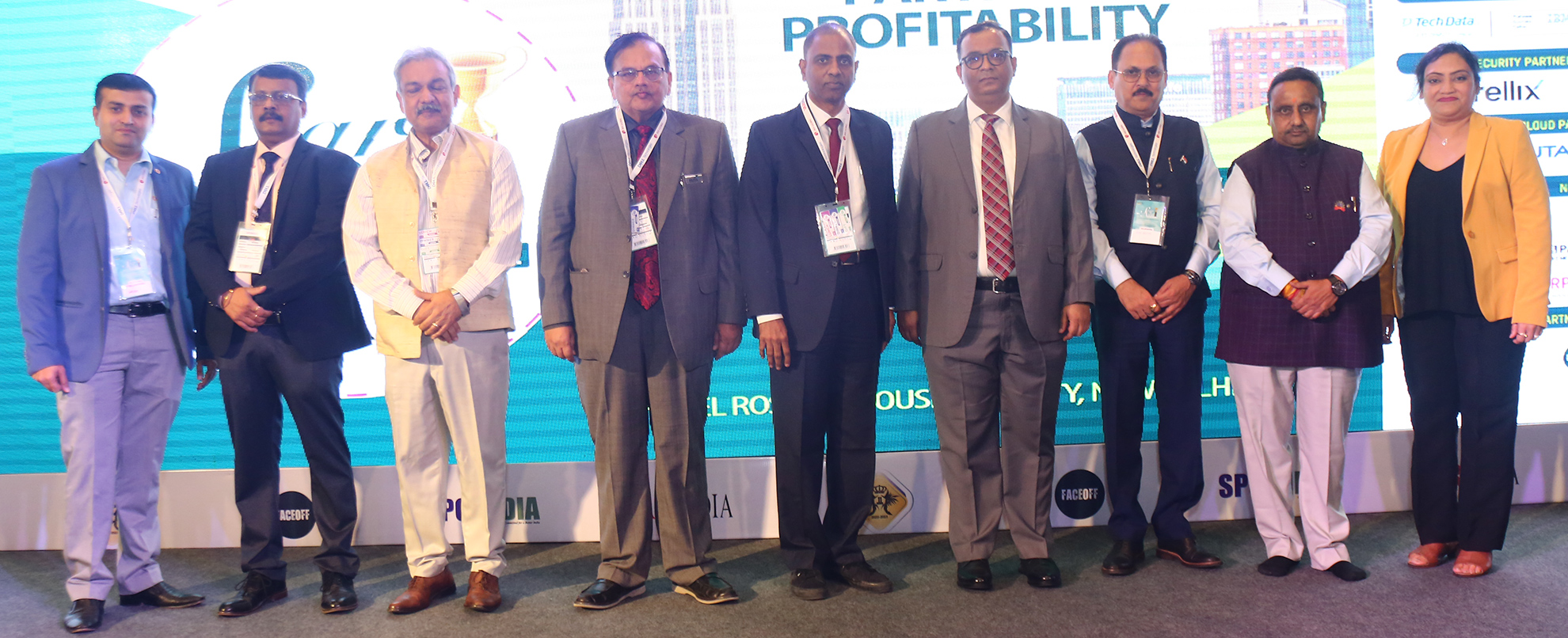
(Left To Right): Mr. Suryanarayan CS, Country Category Manager - Aruba, a Hewlett Packard Enterprise company, Dr. Deepak Kumar Sahu, Publisher & Editor-in-Chief - VARINDIA, Mr. Puneet Singhal, President - Computer Media Dealers Association, Mr. Devesh Rastogi, President - FAIITA, Mr. Deepak Sar, Director (Distribution & Alliances)- Hitachi Vantara, Mr. L Ashok, Chairman - ISODA, Mr. Amit Luthra, Managing Director - Lenovo ISG, Mr. Alok Gupta, President - PCAIT, Mr. Praveen Khandelwal, Secretary General - CAIT, Ms. S Mohini Ratna, Editor - VARINDIA
VARINDIA witnessed a tremendous growth and momentum among the partners who attended the 21st edition of VARINDIA Star Nite (SNA) Awards, held at Hotel Roseate House, Aerocity, New Delhi on 11th November 2022. As both online and offline buying behaviour changes, Indian VARs find massive opportunities and they continue to grow their business. Transformation drives innovation and the Industry Brainstorming sessions are the most effective way to engage in a Face-To-Face conversation. The 12 hours marathon hybrid event started at 9.00 am and went on till 9.00 pm at night. The event attracted over 2347 attendees - Physical attendees were 400 and the rest of the attendees attended online (VARs/Partners/OEMs) from 30 different cities from across the country.
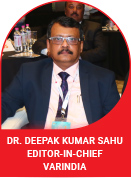 SNA is well recognised as “the DNA of the Channel”. The Partners and VARs who got together took this opportunity to share best practices, network with peers, and gain exclusive market intelligence from the industry, which will result in bottom-line growth. This event was a true testimonial to how companies are well prepared to go physical and digital (Phygital). The event was presented by GoTo. The day-long session SNA was opened with a welcome note by VARINDIA Editor-in-chief Dr. Deepak Kumar Sahu, where he acknowledged the role played by the VARs and Partners on how they are accelerating the digital transformation for the IT companies and customers at large. He also discussed the opportunities for partners such as rapid digitization and how OEMs are pushing sales through their website, online platform and brand show-rooms, with an intention to cut down the intermediaries. It is for the first time 50 leaders from various IT Associations from across the country had attended the event, with this the message of the corporates has reached to 90% ,which is equivalent to 30,000 partner eco-system in the country.
SNA is well recognised as “the DNA of the Channel”. The Partners and VARs who got together took this opportunity to share best practices, network with peers, and gain exclusive market intelligence from the industry, which will result in bottom-line growth. This event was a true testimonial to how companies are well prepared to go physical and digital (Phygital). The event was presented by GoTo. The day-long session SNA was opened with a welcome note by VARINDIA Editor-in-chief Dr. Deepak Kumar Sahu, where he acknowledged the role played by the VARs and Partners on how they are accelerating the digital transformation for the IT companies and customers at large. He also discussed the opportunities for partners such as rapid digitization and how OEMs are pushing sales through their website, online platform and brand show-rooms, with an intention to cut down the intermediaries. It is for the first time 50 leaders from various IT Associations from across the country had attended the event, with this the message of the corporates has reached to 90% ,which is equivalent to 30,000 partner eco-system in the country.
There is technology behind every disruption happening today
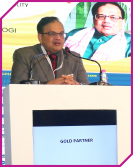 DEVESH RASTOGI
DEVESH RASTOGI
President, FAIITA
With today’s challenges, disruptions and the things which are happening in the last four- five years, we are seeing fast changes in business. Technology has been evolving, disturbing and creating disruption. It is also creating a lot of opportunity for us, because any disruption which is happening today, there’s technology behind it. Till last year, we have been a comfortable platform where vendors, associations, partners have had some working relationships and they were trying to understand each other’s challenges. This year, a new challenge has come up that is a disruption in the T1 distribution space. We should be mentally prepared for this disruption. On the technology front, FAIITA has been working with the partners, and state associations. We have created India IT mall wherein we are connecting each and every brick-and-mortar store through their e-stores at an economical and convenient cost. The government came up with the idea of ONDC and FAITTA is one of the sponsors for ONDC. FAIITA has also engaged with a number of government agencies in the last two years. FAIITA is the partner with GeM, for the training programs and other things.
Technology can only function with a human touch
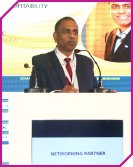 L. ASHOK
L. ASHOK
Chairman, ISODA
No technology can function without a human touch and human interaction and you have a separate thing on a UX and UI. We go with a multiple association to see a benefit from each association, which brings on table to us. In its 14th year of existence, ISODA has about 190 partners pan India, that was initially started for fighting the double taxation and today migrated and navigated to bring value not only to the software partner but also to the system integrators and regional distributor support of members. This is essential for us when we share our knowledge with our fellow entrepreneurs. This brings us new ideas, new avenues and new methods to be profitable in our own business. Invariably, all media companies are part of us and VARINDIA plays a significant role in the growth of this association. I would invite more and more partners to be part of ISODA in the coming years. There is much more we’re going to be bringing on the table for the people to work on, especially in system integration and the software related thing.
Every association’s motto should be business that comes with networking
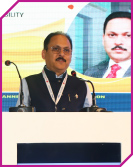 ALOK GUPTA
ALOK GUPTA
President - PCAIT
Any association has to be meaningful. It has to be profitable, effective and powerful. Any association is powerful when its members are powerful. Effectiveness is when you can give a business environment which is clean to its members. As A PCAIT, we consider ourself as one of the most powerful and effective association of the country. We ensure that we create a clean business environment and whenever the situation comes, the association ensures that the problem should be handled. In the last six months we have added about 11 members but we have said no to more than 28 members. We get at least one small case per week, but 99% of those are not for the PCAIT members but are still resolved and given back to that particular association. Every association’s first motto should be business which comes with networking. Every association’s role is to increase the members’ business, not operating the business for them. Whether it comes to the OEMs, distributors or with the government, operating the business is the work of business houses which can provide the kind of environment and networking. Whenever there is a small glitch or any issues with the members, we immediately come into the act. We are doing three kinds of networking. We have listed more than 100 OEMs with whom we are interacting. We are bringing them on board with our partners. OEMs want business with the partners and partners want more and more OEMs to be associated so that they can increase their business.
India’s future business will rely on Internet, Digital Payment and Logistics
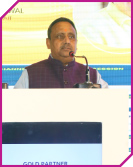 PRAVEEN KHANDELWAL
PRAVEEN KHANDELWAL
Secretary General- Cait
Under PM Narendra Modi’s leadership, digitalization, computerization and upgradation have had a strong hold since 2014. There was a time when the computer manufacturing business was only done by big enterprises. Now, digital technology has entered every household in the form of computers and smartphones. We have started the Rashtriya Vyapar Digital Abhiyan from 15th November in Delhi. In this abhiyan, we are including each organization, from big firms to small retailers, who use digital tools. 40,000 trade associations along with many other ministries, are working with CAIT for this abhiyan. India has around 8 crore entrepreneurs, but only 35% of them are digitally connected. There are three important things for future business - Internet, Digital Payment and Logistics. We have to grow digitally. The government wants to reduce cash circulation. We are going to launch a portal -Bharat E-mart- Of the Traders, By the Traders, For the Traders. Not only goods, the portal will be providing services as well, like financial services, in which HDFC Bank, SBI, ICICI bank and Shree Ram finance will provide insurance to the citizens. This portal will also provide travel bookings with IRCTC, flight tickets (national/international flights) to the people. By launching this portal, we are trying to help the businesses in the e-commerce sector, so that they don’t rely on foreign e-commerce firms.
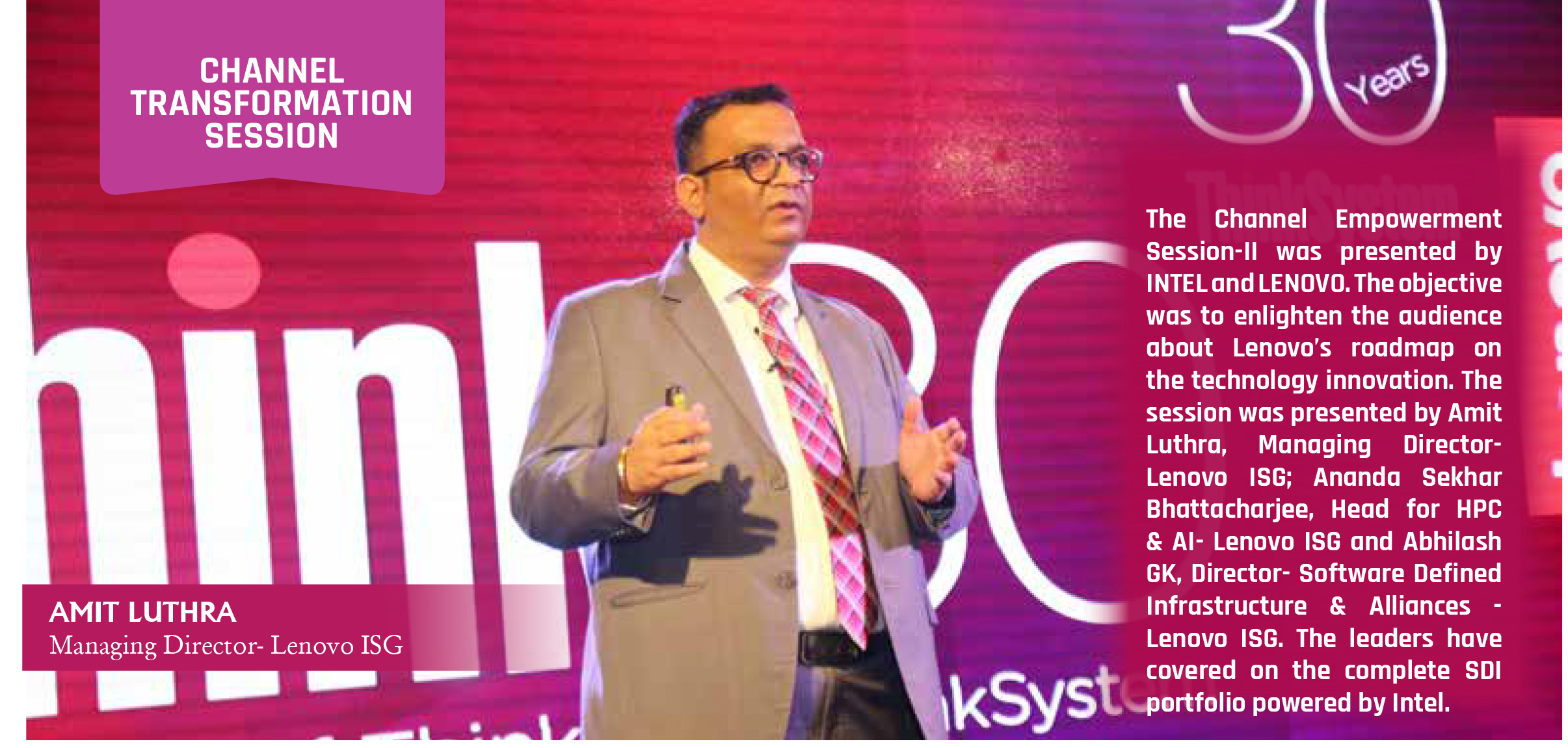
The age of data economy is growing rapidly
“Life was very easy earlier, we used to have enterprise applications and then we used to have resources which used to size enterprise applications. But in today's world, life has definitely changed. Today a lot of things are happening in the industry with edge computing, analytics, and cloud. In fact, social media, mobility, analytics, and cloud computing have changed the way we live today. Technology is changing at an ever increasing pace. Do we actually go back and see that we don't empower our sales teams; we don't actually change our business models or find something which is efficient enough in this contemporary world. Definitely technology is a big opportunity around us. Technologies are helping to do a lot of things in the industry; there are a lot of ways to help our customers when they are walking up this journey. What has changed primarily is, when you build your business models or select your partnership it is important to understand that we have been talking about core to cloud. Then we again saw that a lot of applications are moving from edge to core to cloud. But what has changed recently is, it's not one-way, it’s two-way. Everyone wants to build intelligence at each and every layer. Today bi-directional flow of data is happening. Similarly from edge to cloud is also bi-directional flow of data happening while a lot many different types of data networks are evolving as well. In this new IT world, it is very important to build in intelligence. This is what most of our customers expect from us when they are building up new technologies. We all are living in this data economy.”
Data Center market transforming the economy
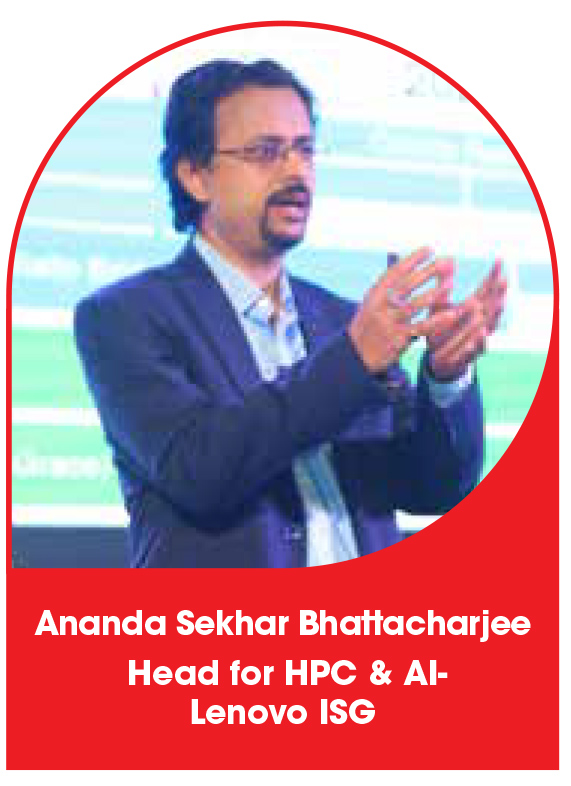 “We are at the crux of the change. The technology trends are shifting. Intel is coming out with a new processor and similarly Nvidia is doubling the teraflops of its processor. The main challenge while designing the server design or the system designed to a data center design is the power or the T case the temperature needed to cool down the systems. How to design systems and data centers to make use of these humongous power requirements is the key challenge which system designers like us are facing today. The power which we see on the system side translates to a lot of challenges when we transfer it to the datacenter side. Generally it's the 40% of the power you use in designing the system or cooling the system. More power means more fans, more mechanical components, more air cooling type systems and more failure rates. This means more power is hazardous for a data center guy. As 40% of the power is needed cooling down the system, so, if you have 23 kilowatt of power you end up paying for 35 kilowatt. The extra kilowatt is needed just to take the heat out of the systems. Lenovo created a sub-brand called Neptune for data-center, in which we have a software called Energy aware runtime and direct water cool nodes.”
“We are at the crux of the change. The technology trends are shifting. Intel is coming out with a new processor and similarly Nvidia is doubling the teraflops of its processor. The main challenge while designing the server design or the system designed to a data center design is the power or the T case the temperature needed to cool down the systems. How to design systems and data centers to make use of these humongous power requirements is the key challenge which system designers like us are facing today. The power which we see on the system side translates to a lot of challenges when we transfer it to the datacenter side. Generally it's the 40% of the power you use in designing the system or cooling the system. More power means more fans, more mechanical components, more air cooling type systems and more failure rates. This means more power is hazardous for a data center guy. As 40% of the power is needed cooling down the system, so, if you have 23 kilowatt of power you end up paying for 35 kilowatt. The extra kilowatt is needed just to take the heat out of the systems. Lenovo created a sub-brand called Neptune for data-center, in which we have a software called Energy aware runtime and direct water cool nodes.”
Cloud is a journey, not a destination
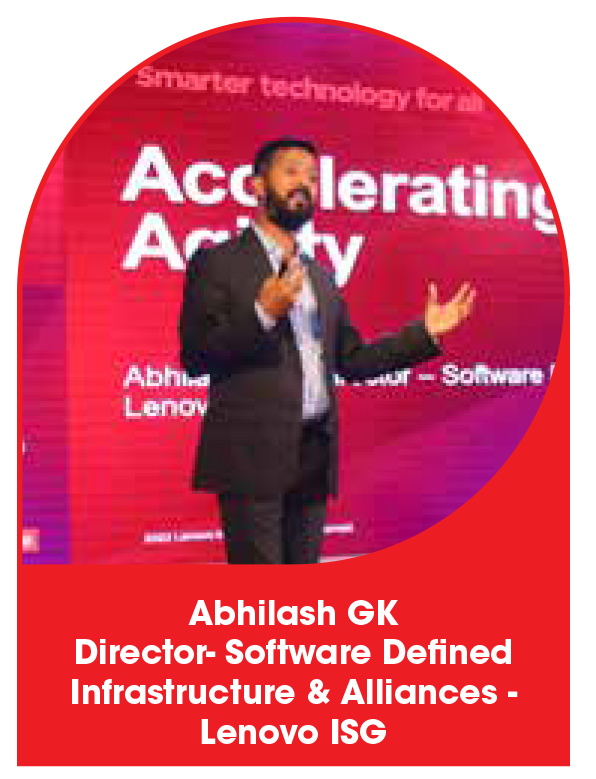 "It is important for us to be agile, so that we can adapt to the new requirements that are coming in, day in and day out. There are four essential pillars which define the success of any digital transformation journey. First and foremost, we have to look at cloud native applications. The way applications are being deployed by our customers, they have to be agile enough. We talk of technologies like containers, micro services. It is important to have your applications built in such a way that they're adapted or adaptable to the cloud native industry that we're talking about. The second important thing is how we manage data. Data has become a currency in today's world. The currency in itself is of no use unless you are able to analyze and interface that data. That is where the whole AI and analytics comes into picture. The way data is being generated and the way data is being consumed has definitely changed over the years. Now back in the day, data primarily was being generated from the core data centers, but today we are looking at a scenario where nearly 75% of the data is getting generated at the edge and a lot of data is also getting consumed at the edge. It is important for us to look at that whole paradigm and that whole ecosystem of where the data is getting generated, and how we can help our customers manage that data far more effectively. And lastly, we have to look at a hybrid, multi cloud sort of an environment. It is one of the important pillars to drive success.”
"It is important for us to be agile, so that we can adapt to the new requirements that are coming in, day in and day out. There are four essential pillars which define the success of any digital transformation journey. First and foremost, we have to look at cloud native applications. The way applications are being deployed by our customers, they have to be agile enough. We talk of technologies like containers, micro services. It is important to have your applications built in such a way that they're adapted or adaptable to the cloud native industry that we're talking about. The second important thing is how we manage data. Data has become a currency in today's world. The currency in itself is of no use unless you are able to analyze and interface that data. That is where the whole AI and analytics comes into picture. The way data is being generated and the way data is being consumed has definitely changed over the years. Now back in the day, data primarily was being generated from the core data centers, but today we are looking at a scenario where nearly 75% of the data is getting generated at the edge and a lot of data is also getting consumed at the edge. It is important for us to look at that whole paradigm and that whole ecosystem of where the data is getting generated, and how we can help our customers manage that data far more effectively. And lastly, we have to look at a hybrid, multi cloud sort of an environment. It is one of the important pillars to drive success.”
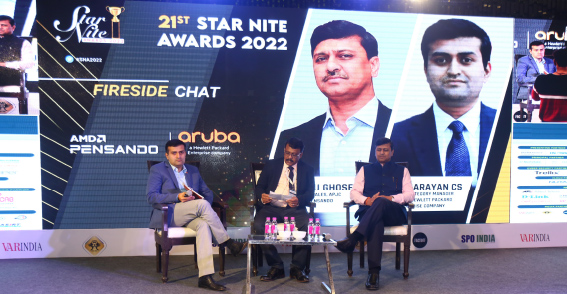 The Session - III (VAR SYMPOSIUM) was started with an interesting Fire Side Chat session with Santanu Ghose, Director Sales, APJC - AMD Pensando and Suryanarayan CS, Country Category Manager- Aruba, a Hewlett Packard Enterprise company. The session was moderated by Dr. Deepak Kumar Sahu, Editor-in-chief, VARINDIA. The discussion was centered on how Aruba, a Hewlett Packard Enterprise Company and AMD Pensando partnership is helping the 4th generation Datacenter to move closer to the cloud story and how partners are taking this to the market.
The Session - III (VAR SYMPOSIUM) was started with an interesting Fire Side Chat session with Santanu Ghose, Director Sales, APJC - AMD Pensando and Suryanarayan CS, Country Category Manager- Aruba, a Hewlett Packard Enterprise company. The session was moderated by Dr. Deepak Kumar Sahu, Editor-in-chief, VARINDIA. The discussion was centered on how Aruba, a Hewlett Packard Enterprise Company and AMD Pensando partnership is helping the 4th generation Datacenter to move closer to the cloud story and how partners are taking this to the market.
Suryanarayan CS
Country Category Manager, Aruba, a Hewlett Packard Enterprise company
Data centers were predominantly points of discussion on speeds and feeds
“With the evolving partnership, the commitment on investment also evolves. It is a joint product development and a joint support. The agenda emphasizes on the partner profitability. There is a transformation which is happening in the data center, and the change is bought by these tech gurus in Pensando.
Hewlett Packard Enterprise is not new to Data Center, we are pioneered from a server storage compute perspective. Now, we are going to heavily focus on the data center business with a joint partnership with Pensando. This is a new change which is happening at the customer side, which needs to be addressed by you all. That will be a joint partnership between HPE, Pensando and you.
Unless the innovation doesn't address the need, there's no point in taking it further. What created the need in the data center space was data centers were predominantly not south bound. The innovations around data centers were built with virtualization around compute, to optimize the resources will not address two points as the security layer. Data centers were predominantly points of discussion on speeds and feeds.”
Santanu Ghose
Director Sales, APJC, AMD Pensando
Pensando and Aruba working on to bring the appliances under one single fabric of fourth generation Data Center
“Pensando is a part of AMD now as Pensando builds technology and chipsets. These chipsets are given to partners like Aruba and they build products out of it. As the business fits into the business goal of AMD, it is now part of AMD. The biggest problem in the data transmitted center transformation and as we move towards cloud, although we are moved to the third generation of switching, we are now moving to the fourth generation of switching. In the fourth generation switching the biggest challenge is to make the network agile and move like a cloud. In the data center space, you will find the converged infrastructure of server and storage has happened but the network is not attached with it. The network does not converge. To configure a workload it will probably take two days to configure the network whereas the compute side gets very quickly aligned. The fourth generation data center needs to solve this challenge. The solution is can we bring all the data center services apart from the routing and switching. Pensando and Aruba are working on how these appliances are to become one single fabric of a fourth generation data center.”
VAR SYMPOSIUM
The VAR Symposium was the most knowledgeable session of the Star Nite Awards. The session was designed in such a way where the partners could elevate their skills and could freely connect with the vendors directly. This event was such a platform where the Channel Partners got a chance to meet and network with the entire channel community, all under one roof.
The symposium was focused on existing and future technologies that will impact the channel in the short, mid, and long term. The Technology veterans helped the IT and communications service providers understand the disruptive technologies and product roadmaps along with key trends. This enabled them to invest in the technical skills needed to build out their services and solution portfolio.
There is nothing like Star Nite Awards and Expo; it is the only annual event that has the breadth and depth of content and events catering to Channel sellers in a profound way and a way that deepens knowledge, offers rich networking and is a boost of business reinvigoration!
Juniper has customers from across verticals in India
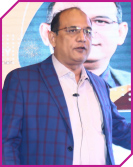 Harshavardhan Kathaley
Harshavardhan Kathaley
Director - Commercial Sales & Area Partner Director (India & South Asia) - Juniper Networks
“Juniper has been around for 25 years now. We have been doing a lot of innovations. Whatever solutions and technologies that Juniper embarked upon, Juniper has always been a leader in it. It is truly a global company now. We service a lot of customers with mission-critical applications in banks, airports, social media and so on. Every telco that you will find globally, you will find Juniper at their core. Every telephone call that you make or any Google Search that you do, there is a good chance that it touches a Juniper device. That is a way of establishing our credibility as a true player. In India, we typically have four solutions that we sell – AI-driven enterprise (wired & wireless LAN), cloud ready datacenters, Automated WAN, and lastly security. We have today customers from across the verticals in the country – BFSI, Govt. of India, Manufacturing, PSUs, Airports, Web 2.0 companies and so on. We believe that we are absolutely ready to take the next step. For the last consecutive years, Juniper has been the topmost leader in the Magic Quadrant leader. We are in the Leaders’ Quadrant even in the datacenter space. We started WAN Edge two years back as a visionary and I am confident that we will move to become the leader in a few months from now.”
65% of corporates will increase their cybersecurity budget in the coming years
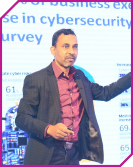 Sunil Sharma
Sunil Sharma
Managing Director (Sales) - Sophos (India & SAARC)
“There is a demand in the market and then there is a partner who is trying to fulfill that demand. But what is that demand for? If someone understands what that demand is and how it is going to grow in the next three months or six months or two years down the line, or what is going to reduce, then they will be the ones who will know the rule of sustenance. In a recent survey done by PwC, it is revealed that 65% of the companies surveyed said that they will have to increase their budget for cybersecurity in the coming years. But the problem on the customer side is that cybersecurity is so complex and is moving at such a fast pace that they are not able to manage on their own. For instance, how many tools does an organization use on an average? They use 46 cybersecurity tools. How many alerts do they create every week? 17,000 alerts on an average; do you think customers have a battalion to manage all of these? When you have cybersecurity complexities increasing, how do you think a CIO with its 10-11 member team is going to handle that? This was never the game earlier. You as a trusted security partner can try unfolding this opportunity by understanding which organization needs help.”
By year 2030, we would have 900 million smartphones in the country
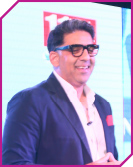 Khalid Wani
Khalid Wani
Sr. Director India & SE Asia - Western Digital
“The power that data has to transform the lives of millions of people around the world is phenomenal. When we look particularly at India as a market, it is expected that by the year 2030, we would have 900 million smartphones in the country. We would have a trillion dollar worth of digital transactions that would be happening across various segments. We are talking about public cloud infrastructure churning close to $15 billion in revenue and the datacentre infrastructure that is going to be laid out exceeding more than $20 billion of revenue. So the size and the scale at which we are creating content and data, you can be sure that the data, whether it is on the cloud or whether it is in your phone, 48% of it passes through various technologies of Western Digital. And so when you look at Western Digital, it has the widest portfolio of data storage solutions available at this point in time. For our channel partners, it is important for us to ensure that in every segment we enable, educate and provide tools that are needed in order to be successful in any segment that they engage with us in. Western Digital has a wide portfolio of products ranging from surveillance storage products to client SSDs and desktop/mobile hard drives.”
We do 100% of our business through partners in India
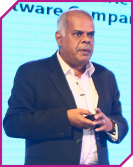 Ganesan Arumugam
Ganesan Arumugam
Director- Channel sales (India & SAARC) – NetApp
“There are three things that I look at when we talk about Partner Profitability. Firstly, to align with the right OEM who has the right growth strategy, understands the market and has the right technology suited for your customers. The second is what kind of support the OEM is giving to the partner – is it a partner-centric company or do they have a direct business model as well. And the third is what kind of programs they are running, the back-end rebate programs that ultimately gives the partner the profitability. Given the competition, the transaction margins keep going down. So you need to check whether there is a good back-end rebate or support system from the OEM to increase the profitability. All of you know NetApp as a storage company; this is the 30th year of our operations. In the 1st two years we have transformed ourselves as a cloud-led data-centric global software company. We clocked in $6.3 billion revenue last financial year. We are now looking at becoming a billion dollar Cloud Company. Our cloud revenue last year was $500 million and we are looking at reaching to become a billion dollar company in the next two years by doubling it. We do 100% of our business through partners in India.”
In the last two years, hybrid work culture has grown by 200%
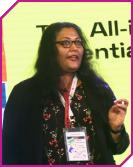 Triveni Rabindraraj
Triveni Rabindraraj
India Sales Head – GoTo
“GoTo was earlier LogMeIn. We changed our brand from LogMeIn to GoTo on this iconic day – 2.2.2022. We are the all-in-one solution provider for essential connections. We have been in this industry empowering companies to go remote and hybrid not just today but from the last twenty years. We call ourselves the OGs in the remote working world. The way the remote work culture has changed over the last twenty years has been really drastic. In the last two years itself, the hybrid work culture has grown by 200%, because of the pandemic. The pandemic has completely changed the way we work and has given birth to what we call the ‘New Normal’. But the world has really been uneasy ever since. First came the pandemic, then came the climate crisis, the Russia-Ukraine war, and then last year we all saw the Great Resignation. Two years back we were all struggling with Work From Home and now the struggle is Work From Office. There are many organizations struggling to bring their employees back. It is not going to be the case anymore. If you do not give flexible work options to your employees, they are probably not going to stay with us. This will result in us not attracting talent.”
Profitability stands for the revenue and the cost
 Deepak Sar
Deepak Sar
Director (Distribution & Alliances) Hitachi Vantara
The theme that was given to me is to talk about profitability. The function of profitability works on just two things, the revenue and the cost. Here I am going to talk about how do we increase the revenue and try and minimize the cost of operations and minimize the ends and make it profitable for your customers and yours. The partner program is the only legal document which tells how you are linked and what you can expect when you become a Hitachi Vantara partner. There are three points that we make our partner program on. The customers want to invest into a technology which will help them to sustain and scale up or out the way they want to do and there is a predictability in terms of the future proofing of the technology that they're using. They want predictability in what they are using. They want repeatability in terms of whatever optimization is happening in terms of what is happening from the perspective of their maintenance of their data centers and applications. They are looking at all that technologies y which they can reduce their costs and increase profitability. Hitachi Vantara is basically Hitachi’s digital focus. It means that all the IP of Hitachi from the perspective of the IT rests with Hitachi Vantara.
Data is at the crux of the transformation
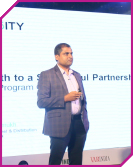 Amit Deshmukh
Amit Deshmukh
Head of Channel & Distribution- Cohesity
Started in 2013, the company pioneered the hyper converged infrastructure into the industry with hyperscale cloud software defined platform. We offer data management solutions platform that can be on-prem, in AWS, at the edge or that can run anywhere. It is a Software Defined Platform, it can be self-managed, or managed by you or managed in the cloud by us. In this journey AWS, Cisco, HP have come in and invested into us and that's how we work together with these large OEMs and infrastructure providers. Transformation is happening for so many years and it’s even more critical today as it has become more data driven today. Data is at the crux of this transformation. Most of our enterprise customers even the government customers are adopting multi-cloud strategy or a hybrid strategy wherein data is not just sitting on-prem but partially in one cloud and partially in other cloud, so we need a hybrid or multi-cloud strategy. With such a growing demand for data there is also an approach to adopt the cloud. In every 11 seconds a customer is being hit by ransomware. Close to 64% of Indian customers had been attacked by a data security breach in the last two years.
PANEL DISCUSSION SESSION - I : MODERATED BY: Dr. Deepak Kumar Sahu, Editor-in-Chief, VARINDIA
 Today, businesses are implementing transformation initiatives to gain faster time to market, stay competitive and optimize the customer experience so much so that the digital transformation market is expected to reach $3.2 trillion by 2025. When it comes to data storage, processing and collaboration, many businesses choose the flexibility and convenience of cloud computing over traditional local hosting and on-premise software.
Today, businesses are implementing transformation initiatives to gain faster time to market, stay competitive and optimize the customer experience so much so that the digital transformation market is expected to reach $3.2 trillion by 2025. When it comes to data storage, processing and collaboration, many businesses choose the flexibility and convenience of cloud computing over traditional local hosting and on-premise software.
Technology has been developing, mutating, and adapting at an exponential rate and businesses have no option but to get on board or be left behind in the competition. As per data, 91% of businesses are engaged in some form of digital initiative, and 87% of senior business leaders say digitalization is a priority.
Tata Communications enabling organizations through Centre for Digital Transformation
Amit Sinha Roy
VP Global Head of Strategic Alliances, Tata Communications
For many of the small organizations technology is a big challenge, they do not understand it. So we got together with CII and co-created a Centre for Digital Transformation and it is in its sixth year. We created a program starting from assessment through enablement to all the way to awards. Over the last few years we have touched over 9000 companies, 14000 employees of those companies across 50 different sessions on different topics. We have done awards where we have actually recognized the best digital transformation adoption and then and now we are going to launch the CIO Awards. So there are a lot of things that we are doing in order to enable starting from the grassroot level all the way to technologically conversant organizations to make sure that they are able to understand, adopt and extract maximum value out of technology.
Digital transformation enhances efficiencies at workplace
Naved Chaudhary
Head of Marketing and Public Relations, Ingram Micro India
Technology has the capability of breaking the shield for the next-level of growth. So the adaptations to the technology are critical. The digital transformation journey is not a time-wise process, it keeps on evolving and the adaptations which are happening are primarily in the areas of CRM, Business Intelligence so that firing happens at the right areas so that better efficiencies come out. It is very critical for smaller organizations, especially SMBs to work in a particular direction. Digital transformation journey which we are into right now shows us the growth and whoever is adopting to digital transformation journey having better efficiencies at workplace. So, if a new technology is being adopted that is going to give them the next-level of growth.
Technology empowering both enterprises and small and mid-sized businesses
Amit Deshmukh
Head of Channel & Distribution, Cohesity
If I want to start my business today, can technology help me to be ahead of the curve by setting things up within no time, the answer is yes. When you are starting a business you need technology to run your websites, applications, email for employees, some basic setup to place & execute your order, store customers. For example, we get 12 months of EC2 to host applications, also we get 12 months free database for hosting our database applications. Other applications like Zoho, the entire platform, be it CRM, mails etc. are available as a subscription for n numbers of users required today. That is the power of technology that has given today to start the business. The technology is empowering not just the enterprise customers like BFSI or pharma but even the smaller and mid-sized customers today are using this.
Business outcome: an important component of digital transformation
Puneet Chadha
CMO, Redington Ltd.
There is a very important component along with technology which is business outcomes. It is very important from a digital transformation perspective. I just want to acknowledge what really happened a few years back with the pandemic and SMBs have taken very different journeys like many businesses were shut down, contracted but there was this set of SMBs which actually did a lot of innovation like they went digital with the use of technology. We did a research sometime back, we spoke to 500-600 customers and 90% of those customers said that they have grown digital investments by about 15-20%. Not only that, they said consumers are going to increase their online purchases. They could have scale online purchases. That is very important for us to understand. From a consumer perspective there is this force which is driving the technology investments in businesses.
Technology not only adding to revenue but also user experience
Subir Mahapatra
Vice President, V5 Global (A First Meridien Company)
Digital transformation is a journey and everybody knows that it has been there for a while and now it is reaching to a stage where it is becoming digital imperative. The role of technology today is - how do technology provide a digital channel medium. The way things have changed, it is not just adding up to the revenue, you look at user experience, how digital mediums have come in and it has impacted all of us. Technology is vital, it is really going to play an important role and we as partners have to really look at becoming a strategic partner and help our customers be it small medium enterprises or small medium businesses, just to see how we are able to help those customers build appropriate solutions based on their needs and scale.
Companies embracing technology are unlocking growth potential
Prama Bajaj
VP, Global Marketing & Strategy, Cloudsek
The companies today which embrace technologies, unlock the potential for growth. Technology for sure is required from the growth perspective. Primarily, if we look at two to three key points, how technology was used was cost efficiency, streamlining business processes and operations, and enablement. Today, technology has gone beyond that. Enterprises are harnessing the power of digital technology to fuel innovation-led growth. So if we look at four to five key factors where technology works as a catalyst then it is innovation, collaboration, growth, enhancing customer experience and improving employee well-being.
PANEL DISCUSSION SESSION - II : MODERATED BY: Dr. Deepak Kumar Sahu, Editor-in-Chief, VARINDIA
 Understanding partner profitability is the most critical subject. Solution providers are changing their business models to focus on new technologies and ways of doing business that can help them meet new challenges. Today, in India, a survey reports that 62% of the large corporates and middle-market companies are in the formative stages of digitalisation. Accordingly, solution providers have shifted from a product-led business model to one that blends product and services sales, with some having shifted to a complete services-led business model.
Understanding partner profitability is the most critical subject. Solution providers are changing their business models to focus on new technologies and ways of doing business that can help them meet new challenges. Today, in India, a survey reports that 62% of the large corporates and middle-market companies are in the formative stages of digitalisation. Accordingly, solution providers have shifted from a product-led business model to one that blends product and services sales, with some having shifted to a complete services-led business model.
Think, build and operate: Three pillars of business growth
Ranjan Chopra
MD, Team Computers
OEM is full of people and people have their careers within. OEMs are also owned either privately or publicly. They have the stock market pressure and that pressure that we and our teams face. Second, what is the difference between speed and velocity? We at times make the mistake of setting the business target - that is speed. The point is velocity is speed in a direction. So it is very important to establish the direction with the OEM. Third is to think, build and operate. We emphasize on operating because most of us could not find people who can operate and somebody has to play the role of a thinker like in which market shall we sell an OEM’s product, how shall we sell etc. Everybody wants more sales, free cash and it will lead to more valuation. For free cash, selecting the direction is very important. All the three roles of think, build and operate are necessary for a business to grow.
Coverage: An important aspect of business
Kamini Talwar
Director, Iris Global Services
Post COVID came the changing dynamics which means the hybrid model and the new tools of today – Zoom and Teams, it calls double if a customer or a vendor or a partner was making 10 calls, now they make 20 calls. Meetings on the go have increased the engagement level at a very high speed. Somehow, partners are very aggressive right now, they are meeting the OEMs and generating a huge funnel. The OEM’s criteria is to have coverage and if you do not have it then you will have a hole in the bottom line at the end of the year. So coverage is a very important point at present and this is what we are doing.
A successful engagement means adding value by both partners and OEMs
N K Mehta
Founder & CEO, Secure Network Solutions
A successful engagement means the OEM should be ready to invest in the partner. So how much investment an OEM is ready to make in the partner, how long it can hand-hold it before the partner starts delivering, so this is the way I look at it. I think a successful engagement is both ways – how much value you are able to add to the partner and how much value the partner is able to add, they should be able to question each other. If they live together that means it is the ideal fit for the partner OEM. An OEM need not go after every partner because every partner’s DNA may not match the OEM. They should select the right partner, invest on a long term, hand-hold, train and help him to win accounts. If this is done I think the partner also will be dedicated to the OEM.
“I see partnership as an investment from both the parties for long-term, fulfilling each other’s future, priorities and can add value”
R S Shanbhag
Chairman & CEO, Value Point Systems
I see partnership as an investment from both the parties for long-term, fulfilling each other’s future, priorities and can add value. It is not just the money part of it, I see the wealth creation in this relationship. Today, if I see the value that got created out of the partnerships are beyond just the money part of it. So there is a credibility and visibility build. Revenue brings the visibility to a greater extent. Profitability queues bigger valuation, even getting identified by the potential prospects to buy you out or invest in you is intangible and invaluable.
Active engagement is the biggest success criteria
Triveni Rabindraraj
India Sales Head, GoTo
One of the biggest success measures for profitability is not only money but the level of engagement and that is the biggest success criteria. There are two kinds of engagement – one is passive engagement and the other is active engagement. Passive engagement is as an OEM you are creating a partner portal, dumping all the information required and doing the measurement on how many times the partner came on the portal, downloading the content etc. But what is very important is the level of the knowledge transfer and it happens when you have the OEM sales person, channel partner sales person and both of them speak the same language, approach the customer in the same way. There should be no difference between the sales persons from the OEM and partner. That is really called an active engagement.
Vendors and OEMs must look at partners who add value
Suresh Ramani
CEO, TechGyan
From the partner’s perspective, when I am going to look at an OEM to associate with, I am not going to look at only the transfer price or the margins. I would like to know what is the air cover the OEM is going to give me in terms of the kind of pull the OEM has, the popular platforms, does the OEM provide me with an opportunity to grow IP around his platform because if it is a product then I am just doing a transaction that means I am buying and then selling. In that case anyone who is going to give a lower price is going to take that share mostly but the platform allows me to create my solution, IP and then I am creating a mode around the solution then someone else may not be able to take the customer away from me. When we are looking at relationships from both vendor and OEM perspective they need to look at partners who can really add value, who are not transacting partners.
Star Nite Awards 2022
 From (Left To Right): Mr. Amit Deshmukh,Head of Channel & Distribution-Cohesity, Mr. Subhasish Gupta,Country Manager India and SAARC- Allied Telesis, Mr. Ganesh Supekar Head - Channel And Alliances - Trellix, Mr. Puneet Chadha, CMO- Redington Ltd., Miss. Sonal Kukreja, Miss Universe 1st Runner-up, Mr. Ganesan Arumugam, Director- Channel Sales-India & SAARC- Netapp, Mr.Suryanarayan CS, Country Category Manager- Aruba, Ms. Lata Singh, Director, Regional Technology Leader-NEB- IBM India-South Asia, Mr. L Ashok, Chairman-ISODA, Ms. S Mohini Ratna, Editor-VARINDIA, Mr. R S Shanbhag, Chairman & CEO- ValuePoint Systems, Mr. Kiran Rajashekhar, Principal Ecosystem Manager, IBM India-South Asia, Dr.Biswajit Mohapatra, Head of Customer Solutions Management (CSM), India and South Asia- AWS, Mr. Deepak Sar, Director (Distribution & Alliances) - Hitachi Vantara, Mr. Ashish D Jain, Executive President & COO (Telecom Division) – Polycab India Limited, Dr. Deepak Kumar Sahu, Publisher & Editor-in-Chief - VARINDIA
From (Left To Right): Mr. Amit Deshmukh,Head of Channel & Distribution-Cohesity, Mr. Subhasish Gupta,Country Manager India and SAARC- Allied Telesis, Mr. Ganesh Supekar Head - Channel And Alliances - Trellix, Mr. Puneet Chadha, CMO- Redington Ltd., Miss. Sonal Kukreja, Miss Universe 1st Runner-up, Mr. Ganesan Arumugam, Director- Channel Sales-India & SAARC- Netapp, Mr.Suryanarayan CS, Country Category Manager- Aruba, Ms. Lata Singh, Director, Regional Technology Leader-NEB- IBM India-South Asia, Mr. L Ashok, Chairman-ISODA, Ms. S Mohini Ratna, Editor-VARINDIA, Mr. R S Shanbhag, Chairman & CEO- ValuePoint Systems, Mr. Kiran Rajashekhar, Principal Ecosystem Manager, IBM India-South Asia, Dr.Biswajit Mohapatra, Head of Customer Solutions Management (CSM), India and South Asia- AWS, Mr. Deepak Sar, Director (Distribution & Alliances) - Hitachi Vantara, Mr. Ashish D Jain, Executive President & COO (Telecom Division) – Polycab India Limited, Dr. Deepak Kumar Sahu, Publisher & Editor-in-Chief - VARINDIA
After the much awaited power-packed partners awards session, the evening session witnessed the Star Nite Awards 2022, where the stalwarts of the industry, Government and the corporate world gathered to witness the welcome note by VARINDIA. The awards were selected based on the Channel Leadership Survey (CLS), which has been conducted every year for the last 2 decades.
The award ceremony started with a special address by the Indian IT channel veteran and thought leader Lata Singh, Director, Regional Technology Leader-NEB - IBM India -South Asia and Kiran Rajashekhar, Principal Ecosystem Manager, IBM India-South Asia who jointly addressed the session and Amit Kapoor, Partner Business Manager-Hewlett Packard Enterprise India addressed the delegates. The speakers congratulated the entire IT channel fraternity for showcasing the true ‘partnership’ and opportunity for growth.
The evening session was enthralled with the presentations from Mr. Prashant Kumar Singh, IAS - GEM (CEO); Prof. Triveni Singh, IPS, Superintendent of Police, Government of U.P.; Dr. Sanjay Bahl, Director General- Cert-in.
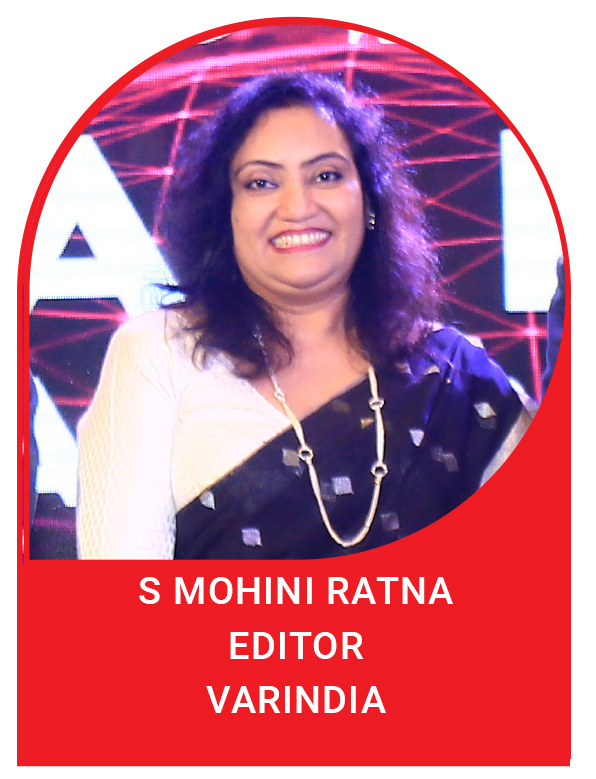 Ms. S. Mohini Ratna, Editor, VARINDIA in her introductory note said, the digital era has brought unprecedented changes to the technology, business and society. Through the daylong sessions and panel discussions, a bright digital future is waiting for the channel.
Ms. S. Mohini Ratna, Editor, VARINDIA in her introductory note said, the digital era has brought unprecedented changes to the technology, business and society. Through the daylong sessions and panel discussions, a bright digital future is waiting for the channel.
Talking about the Channel Leadership Survey (CLS) 2022 is an integrated report that is published in the September 2022 VarIndia issue, which is the 23rd Anniversary Special Issue. The survey was focused on the emerging technologies and contemporary product evolution in hardware, software and services by technology vendors for addressing the needs and challenges of today’s customers. The Channel Leadership Survey finds that cloud and software vendors are increasing their dependence on channel partnerships in the face of increased IT complexity, a critical lack of customer skills, and pressures to cut costs. Partners need more than ever to design, implement, integrate and manage these complex software environments across cloud, on-premises and edge.
The survey finds that software and cloud vendors are increasing their dependence on channel partnerships in the face of increased IT complexity, a critical lack of customer skills, and pressures to cut costs. The cloud OEMs are now targeting Tier 3 and Tier 4 partners, apart from Tier I, II and III, by offering lucrative incentives and recurring revenues. It is essential for stability and growth, but most security integrators rely on project-based revenue to turn a profit.
Digital transformation is imperative for all businesses, from small to big enterprises. Digital is Possible only when partners become critical in delivering complete solutions, bringing together pools of specialist expertise and unique value.
"We are seeing a rapid shift towards services today"
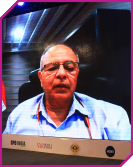 Dr. Sanjay Bahl
Dr. Sanjay Bahl
Director General- Cert-in
The most important thing today is to start investing in people, training, re-skilling and retraining so that one remains abreast with the services that need to be provided to the customers. So whether you are providing endpoint, network equipments or mobile, this is in way expanding the attack surface for the malicious actors. Channel Partners therefore have to make sure that they make available secured solutions to the customers. This is where services are going to be critical. If you look at some of the threats today, they range from ransomware, malware, issues around supply chain, unauthorised scanning of systems, phishing, business email compromises, data breaches and leaks, advanced persistent threats, fake apps, threats on digital payments, unauthorised access of social media and so on. Today we are living in a world where multiple factors are impacting key decisions. There is a constant shift across the security landscape which is giving rise to new challenges. As a partner you are providing layered solutions which is leading to complacency at the customer end and thereby it is degrading their security. Because you have focused on providing products and not the services around it. Supply chain, which has become a mix of social, political and economic challenges is yet another factor here. SO when you are providing any product, I would recommend you look at the complete supply chain chart. Going forward that will help you in the long run and will also make sure that you are in a position to explain to your customers how it helps them from an overall security perspective. Then there is the issue of ‘Aspashtata’ or ambiguity. There is a lack of understanding of different security attacks that are taking place. Because of the large number of technologies that you sell and deploy, it produces several logs and reports. But no one knows how to read them in terms of what is actually a genuine threat. This is the opportunity where you can provide services if you have trained your people and provide these kinds of reports and logs to your customers. There should be clarity around attackers who are injecting misinformation around the cybersecurity landscape to disrupt.
"Today there is the possibility of everything getting attacked"
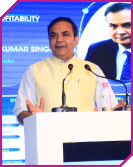 Prashant Kumar Singh
Prashant Kumar Singh
IAS - GeM (CEO)
The idea of the GeM portal was given by the Honourable Prime Minister in 2016, primarily to curb corruption. The older system of DGS&D was replaced by this portal. It’s been a long journey of almost six years and this year alone we are going to touch upon almost 2 lakhs crore in our business. We have close to 65,000 Govt. buyers on one side and 50 lakhs sellers on the other side. There are about 50 lakhs products and we have till date done about 12 million (1.2 crore) transactions. The portal does about 13,000 contracts a day. So it’s a challenging task for us to keep the system up and running. But the best part is that there has been no major security outage so far. I say with fingers crossed that the GeM portal has not been attacked yet. In today’s world nothing is secured. There is the possibility of every single thing getting attacked and there are higher chances of losing your data and money to fraudsters. The idea is that we should devise optimal solutions for our systems and then keep hopes alive that nothing is compromised. GeM has a layered level of security; we have a cybersecurity advisor who keeps on giving us advice and we try to implement them. A piece of advice I got from a gentleman is that ‘don’t be in a fool’s paradise believing that you will be secured by hiring a consultant. This silent digital revolution that we talk about has brought so many changes to all our lives. Today we go to a sabjiwala and we pay him through PayTM. These things were unheard of or unthinkable six, seven years back. The pace at which this is changing our lives is also very alarming. What is going to happen in two years is for all of us to see. Another point is, the pace at which digital technologies are moving, our government regulations or legal systems are not being able to keep pace with it. This is one area where we have to do some serious thinking if we want to be in sync with reality.
"Humans are the weakest link in the cybersecurity ecosystem"
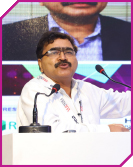 Prof. Triveni Singh
Prof. Triveni Singh
S.P. - Cybercrime, UP Police
We are more reliant on technology nowadays. The concept of GRC is mismanaged. Our main focus should be on human interface. Humans are the weakest link in the entire cybersecurity ecosystem. In all the cases of ransomware attacks, the private investigator investigates the case, and there is no involvement of police.
Recently, we have witnessed a case in Noida for ransomware attack with a renowned insurance company, 10 days after it took cyber insurance. The hackers claimed Rs 15 crore from the insurance company. So, the question is, how did the cybercriminals know the company has taken cyber insurance recently? This is a major concern. If someone suffers from cybercrime, they can report the issue to the police rather than hiring a private investigator.
In my opinion, if there is any cyberattack or data breach issue, it should be reported to the police to investigate the case. Organizations should properly train people how to handle the cyberattack situation. While selling any solution to the industry, organizations should include human interface along with the tools and technology they are providing.
Dell emphasizes on loyalty and deliver business growth
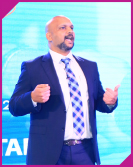 Amol Srivastava
Amol Srivastava
Director Channel - North, Dell Technologies India
One of the most important things that takes precedence at Dell over other things is the question – how do we inspire loyalty and deliver business growth. You will see this in the guiding principles of our channel engagement policy, first, how do we make it easier for you to transact with Dell. Second, partner profitability and third is how do we enhance your experience so that you come back and do business with us again. You hear about that we are in a process of digital transformation but I would really like to think about it if we have the leadership, the tools and the technologies to build and manage processes in a way that we get the best advantages of this and how do we avoid the dangers of it. So we are going to build on these processes, define the processes as there is transformation happening across organizations, economies and in many ways in our lives. Digital technology allows us to take things and put them in the virtual world. We have done some great things in the recent past. We have taken many activities that real people did with pen and paper in offices and elsewhere and we have put them in the virtual world. Think about online banking, we seldom go to the banks today because most of our banking is online. The other part is transformation, it is a very important word and it had an impact in the past. It helped define the processes in a society and also gives us some context in terms of what is happening around us. In pre-industrial society life of an individual was very stable which means for hundreds of years the life of a grandchild was very similar to that of a grandparent but something brought a fundamental change in the society and this was called as the Industrial Revolution, nature of work changed and grandparents could not recognize the lives of their grandchildren. Something like that is happening right now. We are in the middle of it and you are experiencing it.
Data is going to be at the edge
 Lata Singh
Lata Singh
Director, Regional Technology Leader-NEB - IBM India -South Asia
“Overall the industry is dependent on three things - Jan Dhan, Aadhar and mobile. What the industry is undergoing is a result of these three, the adoption of the UPI, the entire biometric system and then the mobile because everyone is using the mobile and that is what life is about. The critical thing that's happened in the recent past is the 5G rollout; with this we are going to have 10x propel, 10x the number of devices and a reduction of 15x on the latency. As a result from the business side data is going to be at the edge. Then how you really move that data, or analyze the data and how you use that data is critical.”
Right competencies help to gear up profit margin
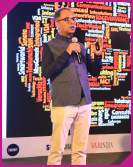 Kiran Rajashekhar
Kiran Rajashekhar
Principal Ecosystem Manager, IBM India-South Asia
“As partners, while we spoke about the market opportunities and the trends and investments IBM is making. This is how as partners you can make money from a software's point of view, you can make margins all the way up to 49% of the transaction. As long as you have the right competencies you are able to make close to 49% of the transaction value as your margins. This is very important as you are doubling down on software, where software is our growth engine.”
“We continue to invest in our partners to grow our ecosystem and network to ensure we increase our customer penetration”
 Amit Kapoor
Amit Kapoor
Partner Business Manager, Hewlett Packard Enterprise India
Innovation is a part of HPE's DNA and that is what we strive for. We aim to provide seamless experience to our customers and partners whether it is medical science, fan stadium, machine to Mars etc. we feel that everything computes, joins together. The moment you provide a seamless experience to customers – that is what they buy from you. They do not look at the underlying product but it is the experience that helps you in taking your relationship ahead. Partners are the key pillars of our strength and if you talk about HPE India, 85% of our business is indirect. We really invest in our partners because a large part of our business comes from partners. We have strategy with partners, we have really group with partners, we continue to invest in our partners to grow our ecosystem and network to ensure we increase our customer penetration. We feel HPE is a force for good as an organization.
We have now entered into a new world. The world, the buying pattern, the technology, the rules of the workplace have changed. It is no longer that a customer comes to you with the requirements. They only want an outcome based instance. Strengthening the core, evolving into newer technology which is data first modernization, providing seamless experience across core, data and the edge - this is a part of our strategy for FY23 with our partners. After the COVID era people are moving into the digital economy. We feel the digital economy is meaningless without a data first modernization strategy. We all use data for making decisions, it is an imperative part of our business. Unless you are deriving meaningful input from data it does not make any sense. So there is a complexity and to solve it HPE comes into perspective. We provide you with solutions, seamless unified experience on the core, edge, colocation data center etc. This is how we are striving our customers gelling with our partners for data first modernization.
TECH TALK SESSION
The Star Nite Awards witnessed the discussion on how every possible technology was there to explore the future of IT. Partners shared the opportunity to discuss their technology products or services in a thought leadership format that educated, informed and was sellable.
The famous 10 minutes Tech talk session, where only three corporates (Allied Telesis, Trellix and Nutanix) had participated, really helped the partners and VARs to stay up-to-date in using technology and becoming better communicators in the workplace.
The topics covered starting from Digital Transformation, Security & Risk, Wireless Network and more and the Speakers shared their experiences in their respective fields. The key-takeaways of the session was Cyber security and digitization are the way to move forward, unlocking much-needed efficiency and sustainability today.
Technology disruptions bringing the industry together
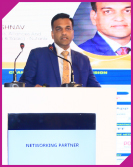 Nutanix is a global leader in the hybrid cloud infrastructure space. Nine years back, we were the ones who actually challenged the status quo by completely changing the enterprise storage market and coming out with a brand-new category called hyperconvergence infrastructure. We are at the cusp of a massive transition. We are at the cusp of moving ourselves from being a hyperconverged infrastructure company to a hybrid cloud infrastructure company. There are disruptions on the technology side and in the industry, which make it more imperative to be together. As a channel leader, we are laser-focused on onboarding new customers. There are three things that are very crucial to us. With the kind of growth that we’re looking at, we’re never going to double our sales team. The other major focus is ease of doing business. We do not want it back into a particular quarter and we want to drive this business so linearly, that it also gives a lot of ease of doing business for our channel partners. The third and very important aspect of our strategy is about investments. A large part of our investments is directed towards customer marketing, but this year, we have decided to double our marketing investments towards the channels. We want to go and create value for our customers, partners and hence the channel is laser focused in terms of driving quality over quantity.
Nutanix is a global leader in the hybrid cloud infrastructure space. Nine years back, we were the ones who actually challenged the status quo by completely changing the enterprise storage market and coming out with a brand-new category called hyperconvergence infrastructure. We are at the cusp of a massive transition. We are at the cusp of moving ourselves from being a hyperconverged infrastructure company to a hybrid cloud infrastructure company. There are disruptions on the technology side and in the industry, which make it more imperative to be together. As a channel leader, we are laser-focused on onboarding new customers. There are three things that are very crucial to us. With the kind of growth that we’re looking at, we’re never going to double our sales team. The other major focus is ease of doing business. We do not want it back into a particular quarter and we want to drive this business so linearly, that it also gives a lot of ease of doing business for our channel partners. The third and very important aspect of our strategy is about investments. A large part of our investments is directed towards customer marketing, but this year, we have decided to double our marketing investments towards the channels. We want to go and create value for our customers, partners and hence the channel is laser focused in terms of driving quality over quantity.
Trellix mainly focuses on XDR Technology
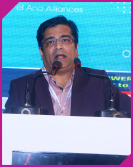 Last year when a private equity firm STG, Symphony Technology Group, had acquired the enterprise piece of erstwhile McAfee Inc’s business and post the acquisition, they also acquired the product business of erstwhile FireEye Inc. Post both these acquisitions, they decided to merge these two companies. But then the board was in doubt with which brand to go forward because both had their own brand recall and their own install base. It was then a decision was taken to come up with a new brand identity and that in January this year, we launched a brand called Trellix, which is an amalgamation of two very well-known cybersecurity companies McAfee enterprise and FireEye, which focused on XDR Technology. The remaining portfolio which was focusing on cloud security, has been hived off under a separate brand called Sky High. We’ll be launching our partner program beginning January 23. The program which will be made available for all partners across the globe will be called as Trellix Extend which will have five different categories of partners to classify. Amongst all these five categories, the biggest one in terms of revenue contribution will be the stimulation partners. There’ll be two-way profitability avenues which will be made available. So, that’s something a key differentiator or unique thing which we will be bringing in with our Extend program beginning January, and based on the category and volume contributions, there will be some handsome rebates or back end. That’s the two-way profitability avenue which will be made available to most of our partners in Extend. Technically, we are also a 100% channel driven company and that's how we will continue to be.
Last year when a private equity firm STG, Symphony Technology Group, had acquired the enterprise piece of erstwhile McAfee Inc’s business and post the acquisition, they also acquired the product business of erstwhile FireEye Inc. Post both these acquisitions, they decided to merge these two companies. But then the board was in doubt with which brand to go forward because both had their own brand recall and their own install base. It was then a decision was taken to come up with a new brand identity and that in January this year, we launched a brand called Trellix, which is an amalgamation of two very well-known cybersecurity companies McAfee enterprise and FireEye, which focused on XDR Technology. The remaining portfolio which was focusing on cloud security, has been hived off under a separate brand called Sky High. We’ll be launching our partner program beginning January 23. The program which will be made available for all partners across the globe will be called as Trellix Extend which will have five different categories of partners to classify. Amongst all these five categories, the biggest one in terms of revenue contribution will be the stimulation partners. There’ll be two-way profitability avenues which will be made available. So, that’s something a key differentiator or unique thing which we will be bringing in with our Extend program beginning January, and based on the category and volume contributions, there will be some handsome rebates or back end. That’s the two-way profitability avenue which will be made available to most of our partners in Extend. Technically, we are also a 100% channel driven company and that's how we will continue to be.
Increase in Network Complexity in today’s tech world
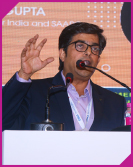 There are four vertical segments which we focus across the globe. We have our own manufacturing facilities today. In the last three years, customers have been struggling to get their network equipment. We’ve got tons of customers in the government and in the defence research sector. The other three verticals are focused globally and in India. The relevance of IoT becomes very prevalent in the manufacturing domain and in the education domain. Today, networks have become extremely complex. Partners who have worked with us have grown with us. They’ve seen the way we bring in value when we build a business with them together. From a network infrastructure perspective, we are strong in the wired network with innovative IPs on wireless technology. The autonomous management framework is a software defined AI built-in network wherein you are able to do the entire control from the same GUI. We are the only vendor who talks about integrated solutions with 30+ cybersecurity international vendors and a couple of others, that brings a granular single dashboard with which you can control your entire wired, wireless SD-WAN and the cybersecurity solution to the extent of pushing policies and changing configurations. We talk about a software defined network built with a lot of AI in it, where human intervention, which is one of the major areas when we talk about networks, has a lot of failure points. We talk about the least amount of human intervention from an IP backbone point of view. From a channel perspective, we have got a well-oiled channel policy.
There are four vertical segments which we focus across the globe. We have our own manufacturing facilities today. In the last three years, customers have been struggling to get their network equipment. We’ve got tons of customers in the government and in the defence research sector. The other three verticals are focused globally and in India. The relevance of IoT becomes very prevalent in the manufacturing domain and in the education domain. Today, networks have become extremely complex. Partners who have worked with us have grown with us. They’ve seen the way we bring in value when we build a business with them together. From a network infrastructure perspective, we are strong in the wired network with innovative IPs on wireless technology. The autonomous management framework is a software defined AI built-in network wherein you are able to do the entire control from the same GUI. We are the only vendor who talks about integrated solutions with 30+ cybersecurity international vendors and a couple of others, that brings a granular single dashboard with which you can control your entire wired, wireless SD-WAN and the cybersecurity solution to the extent of pushing policies and changing configurations. We talk about a software defined network built with a lot of AI in it, where human intervention, which is one of the major areas when we talk about networks, has a lot of failure points. We talk about the least amount of human intervention from an IP backbone point of view. From a channel perspective, we have got a well-oiled channel policy.
See What’s Next in Tech With the Fast Forward Newsletter
Tweets From @varindiamag
Nothing to see here - yet
When they Tweet, their Tweets will show up here.





